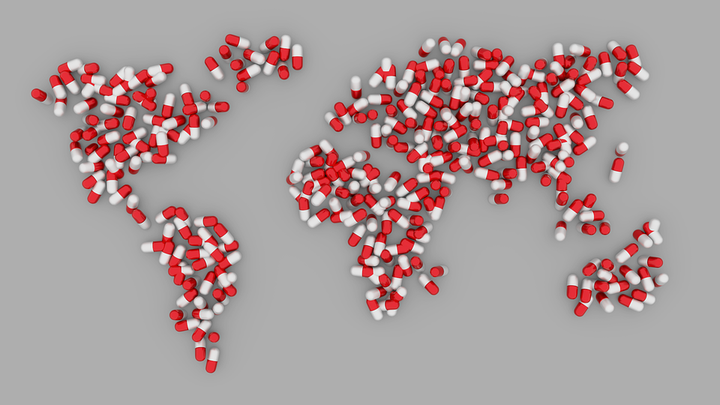
The United States Surgeon General’s November 2016 report on Alcohol, Drugs, and Health Care is the first of its kind. The American Medical Association (AMA) deemed addiction a disease in 1956. In January 2016, the Centers for Disease Control and Prevention (CDC) reported that prescription opioid sales in the United States had increased by 300 percent between 1999 and 2015. The fact that it took epidemic proportions, with over 129 people dying of overdose every day, for him to finally say something is mindboggling.
I do give kudos to the Surgeon General for having the courage to speak out. But are we really talking about addiction in the way it needs to be talked about, without letting the effects of stigma dilute the conversation? We’re just now talking about integrating behavioral health into primary health care. No matter what we call it — chemical dependency, substance abuse, or some new terminology we decide to use, we keep hoping that someday we can finally destigmatize the disease. Now that middle class America is being affected by these opiate overdoses, we can no longer put it on the poor and the disenfranchised.
Whatever it took, we’re finally there. I hope everybody starts paying attention. I challenge Americans to talk about what needs to be changed. Even though opiate addiction has grown to epidemic numbers, alcohol and other drugs still kill more people than opiates do—in auto accidents, suicides, and liver diseases caused by addiction. But still, we label alcohol related deaths with names like cirrhosis of the liver, rather than alcoholism. We label it heart attack, rather than cocaine addiction. It doesn’t always get called the real name of its disease. We don’t look at the statistics showing that the No. 1 health problem in America is really substance use disorder—and not just now, but for decades. America has more addicts than any other country in the world. We have more physicians prescribing drugs than any other country in the world. We consume 90 percent of the opiates in the world.
We really need to be talking about the opiate epidemic in the way that it needs, and deserves, to be talked about—including the truth about how we got to where we are today. I believe it has much to do with Big Pharma and the medical professionals who receive financial incentives and payoffs for prescribing their drugs. Big Pharma, in particular Perdue Pharma, introduced a “miracle drug.” It was a chemical that was not well researched, and we were told that it was not addictive. In fact, these drugs do have addictive substances, including Oxycodon, Oxycontin, and more recently fentanyl. This chemical was used over a long term, despite the fact that the research they had done was only over a short term. The effect of using a substance for three or four days is a whole different ball game than using that short term substance for three or four months.
They gave this addictive substance that had been artificially created in a lab to adolescents and young adults, whose brains were not fully developed, but still growing. Certain towns in America were targeted. Poor towns. Small towns. The usage grew. All of a sudden we woke up and realized we had an epidemic on our hands.
We Americans believe our physicians. We believed Pharma to tell us the truth and to care more about us as humans than they do about money. How did we become dependent on highly addictive medications like Percocet, Vicodin, OxyContin, and morphine? We started in the first place, and we were conditioned to think that we needed to. Although prescription opioid sales in the US tripled between 1999 and 2015, Americans reported having no significant increase in pain. Why? Where did the vital statistic on pain come from that we’ve become accustomed to seeing? You know, the smiley face versus the sad face, and the question “Tell us on a scale of 1 to 10 how much pain you have.” We were programmed to look at pain and focus on it in a new way. When our prescriptions ran out, we either convinced our physician that we were still in pain and needed a refill, or we turned to illegal opiates like heroin. Then we wonder why we have millions of people who don’t understand their lives.
None of this is at the forefront of our conversations, or in the rationale of lobbyists, or behind the walls of our nation’s healthcare policy making discussions. Big Pharma sold America a bill of goods, and they made a lot of money on it. Shame on us. Shame on America. Let it be a lesson. It’s time for us to ask more questions of the professionals in our lives. To use our own minds in discerning that when our child has a tooth extraction, he doesn’t need a month’s worth of pain killers.
In his report, the Surgeon General included a Pain Treatment Tool Box which says, for the first time, that less prescribing is better. Hallelujah! But is it too late? Has the damage and neglect gone too deep? Has the conditioning of Americans become too widespread? Have we become trained to rely on substances to relieve every discomfort, rather than looking at the source of what causes our discomfort? We have become a nation of people who don’t want to suffer. And we don’t think we should. So we take a pill, or a drink, or another kind of band-aid, to mask the wound and numb the pain.
But whether our suffering is emotional, spiritual, physical, or financial, out of suffering come great lessons. We learn that sometimes just an aspirin is ok. A little bit of ice, some rest, a conversation, or some tears can take us through the suffering to the other side. It all starts with being willing to talk about it, before another 60 pass us by.